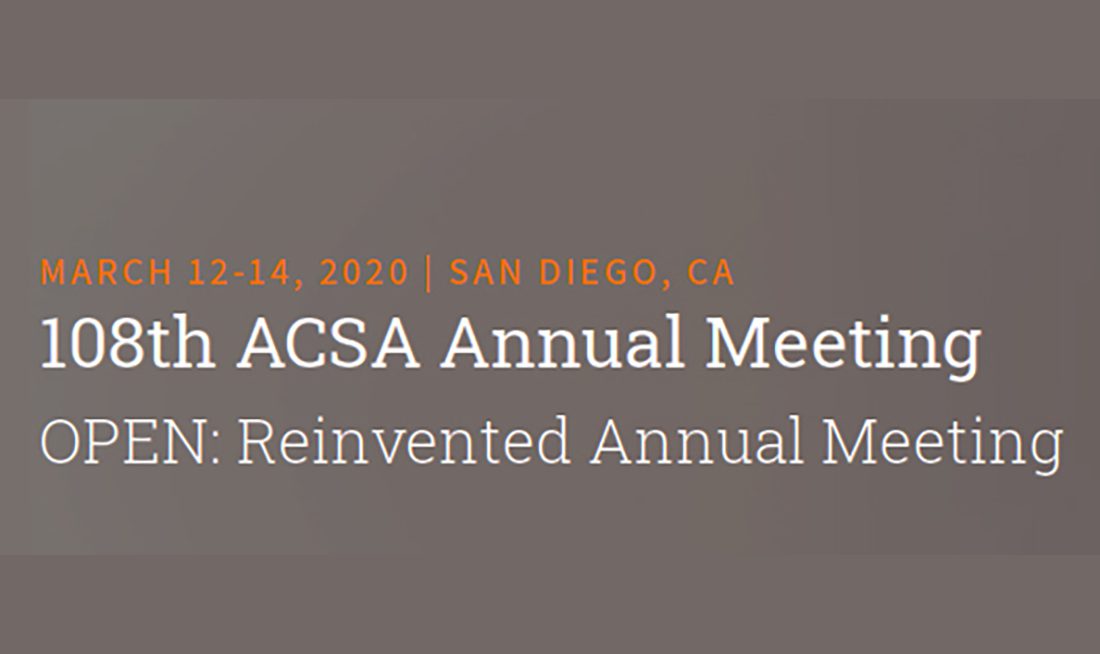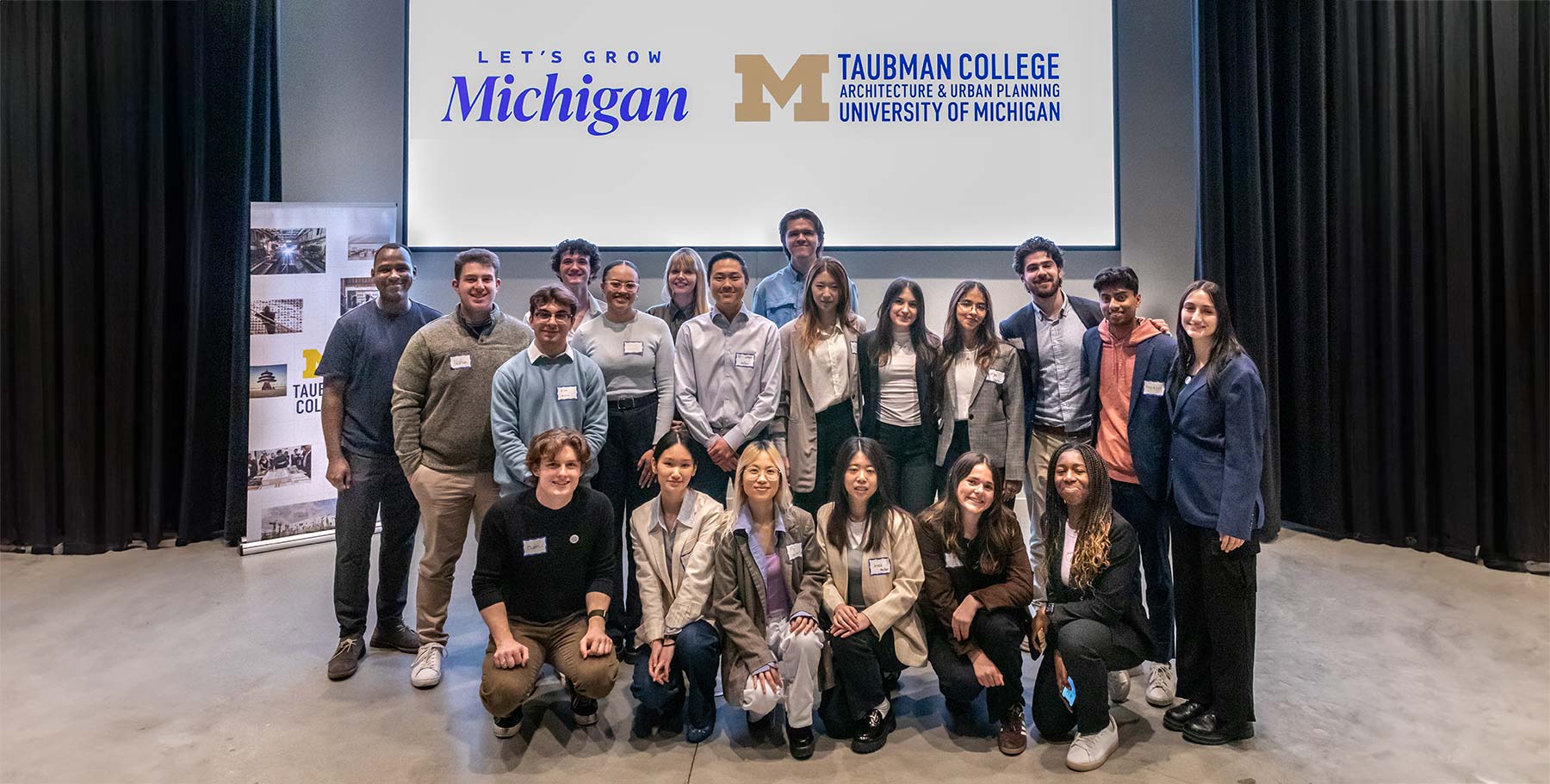Although the COVID-19 pandemic cancelled the 2020 meeting of the Association of Collegiate Schools of Architecture (ACSA), research and scholarship by Taubman College faculty figured prominently in the programming.
Steven Lauritano’s paper, “The Case for Survey Eclecticism” was accepted for the Pedagogy session. He is a lecturer in architecture.
Summary: The paper examines the merits and potential pitfalls of a new approach to teaching the global history of architecture, piloted at Taubman College. Instead of asking students to work through a single textbook, an “eclectic survey” presents a chapter from a different survey text every week. Each of these chapters is carefully selected to highlight a distinct interpretive tradition. Together with relevant details of buildings and artifacts, lectures in an “eclectic survey” course reveal the contexts that shaped each author’s approach to architectural history. Ultimately, the paper argues, an eclectic framework helps students understand the consequential ties that link historiography and design.
Cyrus Peñarroyo’s paper, “Online/On-site,” was accepted for the Urbanism session. He is an assistant professor of architecture.
Summary: This mapping-based research and design project studies the digital divide in Detroit, focusing on Internet access in the city’s most disenfranchised neighborhoods. Despite recent development, Detroit has the lowest rate of Internet connectivity in the United States, excluding thousands of people (specifically school-aged youths) from the opportunities for education, employment, and belonging afforded to those with the ability to get online. This condition is exacerbated by the economic precarity of many Detroiters, the high costs of individual residentially-based internet access, and uneven broadband service provision. Online/On-site combines publicly available spatial data with information gathered from interviews of high school students in the city in order to map detailed geographies of digital access and exclusion across Detroit. The project identifies latent opportunities to reimagine Detroit’s disinvested neighborhoods in ways that enable public assembly and internet connectivity, proposing urban design scenarios that are rich with ways to connect physically and virtually.
Mireille Roddier’s paper, “How do I look? Visualizing the city through a gendered gaze,” was accepted for the History, Theory, Criticism session. She is an associate professor of architecture.
Summary: Whereas most categories of photography — be it portraiture, still life, experimental, or any of the genres traditionally represented in award categories — are close to having achieved gender parity, street photography still lags far behind. Why does the visualization of the streets still stand as a dominantly male activity? From “street-literature” (the literary genre that grew out of the modern city, influenced by its capture on film) to contemporary urban representations, this paper traces whose voice or gaze has had the authority to chronicle the public sphere, and how these narratives were constructed as dominant, or disseminated as alternative point-of-views. Divided between historical analysis and creative program, it engages the character of the flaneuse as writer, painter, photographer, cartographer, and the authority of her gaze as cultural apparatus, in order to uphold a contemporary mode of urban image production specific to, rather than concealing of, its subjects.
Roddier also was slated to co-lead a special focus session, “The Open Paradox,” with Britt Eversole of Syracuse University.
Summary: From the Open Society to Open Work, from Open Source to Open Access, the “open” has served as an evocative and efficient postulation. The efficacy of the term, however, does not lay in any objective categories of action or practice, but only in relation to a preexisting body of disciplinary knowledge, a set of social and political protocols, or an accepted model of form or formalism. To deploy the open without context not only deprives it of its critical agency as a counter-practice; it also renders it susceptible to appropriation as an instrumental apparatus of ideological concealment.
A paper by Jieqiong Wang, Robert Adams, and Mary-Ann Ray, “Countering the Biennialization of Architecture in the Chinese Urban Village in Shenzhen,” also was accepted. Adams is an associate professor of architecture. Ray is a professor of practice in architecture. Wang is a Ph.D. student at Taubman College.
Summary: From Europe to China, biennial infrastructure has allowed global curators, architects, and urban designers to use exhibition tactics to intervene in local communities. This paper examines local reactions to such expanding forms of architectural collaboration or activism through an innovation project, “House 17.” Led by Adams and Ray, this intervention project was located in a Chinese urban village where the 2017 Shenzhen/Hong Kong Bi-City Biennale of Architecture and Urbanism was hosted. By documenting processes of negotiation, collaboration, and sometimes friction among local officials, residents, and designers, this paper reflects on the new position of curators and architects, as global experts, in the state-directed urban renewal process in China.
In addition, two teams of Taubman College faculty won 2019–2020 Faculty Design Awards from ACSA. The Faculty Design Award recognizes work that advances the reflective nature of practice and teaching by encouraging outstanding work in architecture and related environmental design fields as a critical endeavor.
McLain Clutter and Peñarroyo, who are design partners in the firm EXTENTS, were honored for “Shaped Places of Carroll County New Hampshire.” Read more.
Kathy Velikov and Jonathan Rule were honored for the New Domesticities New Collectivities studio, which explored the development of alternative forms of housing for emergent forms of living and working in Detroit. Read more.
Finally, Velikov, along with her co-authors, Associate Professors Lars Junghans and Geoffrey Thün and Daniel Tish, M.Arch ’15, and Dustin Brugmann, M.Arch ’15, won the inaugural TAD Research Contribution Award for their paper, “Experiments Toward Hyper-Local Reverse Heat Flow Assemblies.” The Technology | Architecture + Design Journal (TAD) is published by the ACSA. Read more.





